This season seems to be "educate Hobbes" season (a perpetually occurring event), in which I have been kindly provided with a tour of the output of shops that I have not previously encountered: Tea Urchin, Pu-erh.sk, Chawangshop, and, today, Bannacha.
Small, fragmented leaves
Bannacha is run by a Frenchman (I think) by the name of William. Has that been anglicised from Guillaume? We may never know.
What we do know is that William has been around Yunnan quite a lot, over the course of something like four years. He offers a small range of cakes for sale, which is, I think, a good way to go about things. Sometimes less is more.
The rinse starts out yellow, and oxidises to orange over the course of a minute or two
This first cake is from Daxueshan [big snow mountain] in Yongde County of Lincang prefecture, north of Simao prefecture, north of Xishuangbanna. I forget where I saw it, but one reckoning of the availability of tea acreage in Lincang seemed to indicate that the (vast) majority of it is centred around Daxueshan, a large region surrounding a particularly high (~2.1 km) central mountain. There are a few Daxueshan, as far as I can tell, scattered around the province; I suppose that "Big Snow Mountain" is a fairly generic name.
The leaves to this cake, pictured above, are small and fragmented, carrying a solid sweetness that tells us they are, at the very least, quite lively. The colour is good: green-black. Its producer, the Gexiang Tea Co., is entirely unknown to me, and is apparently based in Yongde County.
Good leaves, with some fragmentation
The soup is a thick, straightforward yellow that gradually oxidises into orange. The scent in the wenxiangbei [aroma cup] reminds me of the purple fruitiness that I have come to associate with Yongde leaves.
I liked this cake. It is straightforward, "big", penetrating in its sweetness, and endures well as I continue to brew it. Some roughness creeps into later infusions, depositing a green abrasiveness on the cheeks and tongue, which suggests that there is at least a portion of lesser leaves in the blend. However, at $13/100g ($46 / 357g equivalent), it isn't the most expensive tea in the world, and so it can get away with being somewhat down-to-Earth.
Its penetrating sweetness goes a long way in my affections, but I decide to change gear and try a second cake from Bannacha after the first ten infusions...
"Daxueshan"
The first cake was accompanied by the excellent last album by Soulfly, "Omen"*. In preparation for the forthcoming Mengku cake, I queue up the latest from Lamb of God, "Resolution". As fans of the band will know, they are, despite the name, definitely not religious. This genre of music goes surprisingly well with pu'ercha. "Good Zen can happen even in downtown Tokyo", as they say.
*I recently saw Soulfly at a tiny gig in Oxford. It's rare that my favourite bands come here, because it's a quiet little university town. Max Cavalera is an impressive man. I was less convinced when he invited his two Justin Bieber-esque sons to come on-stage to sing Sepultura numbers.
*I recently saw Soulfly at a tiny gig in Oxford. It's rare that my favourite bands come here, because it's a quiet little university town. Max Cavalera is an impressive man. I was less convinced when he invited his two Justin Bieber-esque sons to come on-stage to sing Sepultura numbers.
Bannacha has a penchant for minor tea companies, it seems, which is no bad thing. This particular cake was made by an outfit called "Mengku Jinqiao", where the name "Bainian Laoshu" means "100-year old-tree". Essentially, it is a claim that the leaves come from established trees, and William writes that the maocha was sourced from several villages around the Xibanshan region of Mengku County, also in Lincang prefecture.
He writes that there are many varietals growing on Xibanshan, accounting for the varied appearance in the maocha blend, pictured above. However, the leaves look healthy enough in colour and texture, and have a potently heavy scent of sweetness of which I heartily approve.
Despite the impression that the above photograph might give, the soup is a pure yellow, and which gradually darkens in the air. This cake seems more chunky and present than the Daxueshan. It delivers a slug of heavy fruitiness in the nose, and provides a strong, sweet body that pushes all the way through the mouth.
Like the Daxueshan, it is not absent some rough green abrasiveness on the cheeks and tongue, but the effect is much diminished, and easily controlled by removing a few leaves from the pot. It is not a wildly complex tea, but it does provide pure, unadulterated sweetness from beginning to end, which is to be commended.
"Bainian Laoshu"
Summing up, I enjoyed both of these cakes. While they have the body of more down-to-Earth cakes, they provide plenty of Lincang sweetness and last forever. It is this latter potency that lifts them above the crowd of everyday cakes. The "Bainian Laoshu" cake at $39/357g is priced quite nicely, and, despite being a little less expensive than the Daxueshan, struck me as being the better cake. It is also remarkable in that this is the first cake named "Bainian Laoshu" which wasn't entirely dreadful. For some reason, the name is cursed.
Thanks again to William for the opportunity to try these solid Lincang cakes from two producers whom I've not come across before. Drink them with some good music.

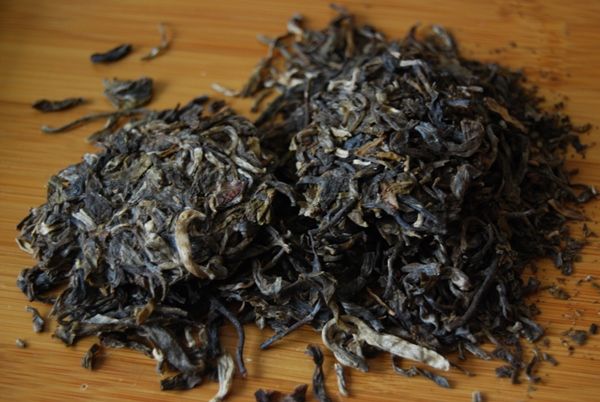
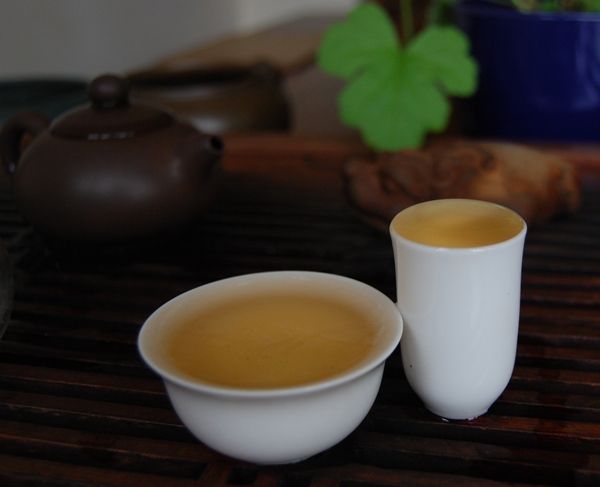


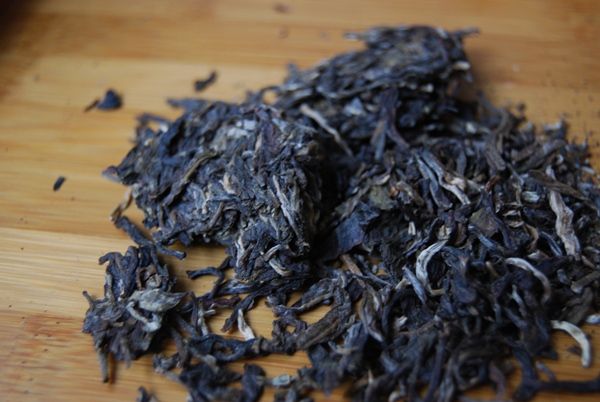
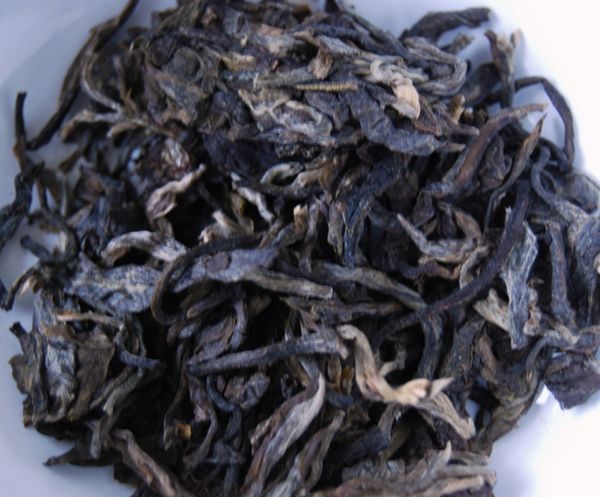
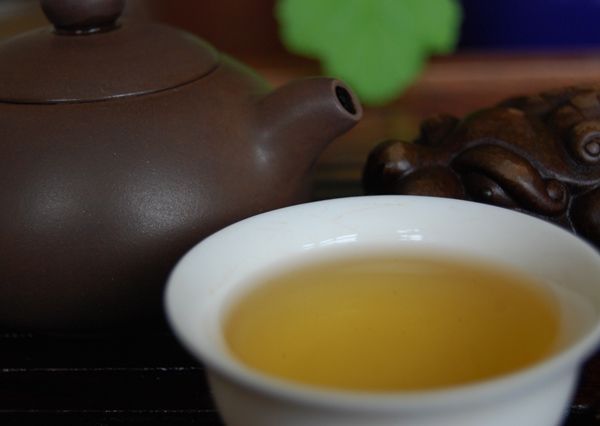

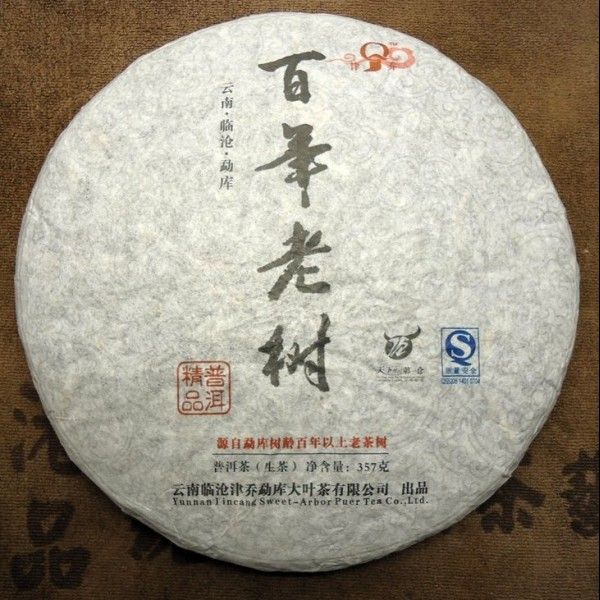
4 comments:
It should be kept in mind that high end Mengku improves alot after about two to three years, sort of like Yiwu. Not that this should detract from the review in any way, especially since for me, I like young Mengku for green sheng, drinking right away. Nice to have a choice of young and slightly less young tea!
--shah8
Dear Shah,
I can't recall having tried older (Shuangjiang?) Mengku (Rongshi?) and so I'll definitely take your word for it! I imagine it'd be solid, nonetheless, if perhaps not too ethereal. :)
Toodlepip,
Hobbes
When I think of teas you tried, plus, the whole Bainian Laoshu concept (forget the 6FTM Zhangxiang), I think of the S.M. Bainian Gushu from '04, which I'm pretty sure is a Bingdao area tea. Gushu instead of laoshu, but...
aaaaaaanyways, my experience is from YS Yongde Da Xue Shan. It has definitely gotten better, and I'm saving the last little bit for the next time I compare another Lincang tea. I've also noted a difference in the few circumstances where people review a just-pressed lincang with a later review, the age tends to really help. I follow this rule for JingGu tea as well.
...hmmm, realized both teas are the same age! I had thought the Da Xue Shan was younger! Sooo, edited my comment before I even posted! So both teas are probably stable in flavor before further aging...hmmm, makes me need to reread the whole review, eh?
--shah8
If I ever manage to finish my household tasks today (mowing the lawn is more Sisyphus than Heracles) I am resolved to find some older Mengku tea to drink. :)
Toodlepip,
Hobbes
Post a Comment